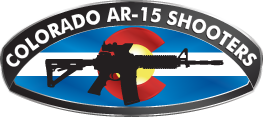I've got that single rifle mag on my belt as my go-to reload. Too many magazines on the belt and you start to look like the michellin man. I keep the chest rig on the floorboard of the truck if I'm not in uniform. It gets put on before I open the door in the event of contact.
I think I posted something like this before but I'm not sure what thread I posted it in. Here's my deal with extra magazines; When we invaded Iraq in 2003 I walked off the ship carrying 165lbs of gear between my ruck, armor, deuce gear and weapon (249 SAW). In 2004 most of our gear was in the trucks so my equipment weight was down to about 75lbs. After an incident assaulting a house resulted in me getting hung up climbing over a wall and looking way too much like an Echo silhouette for the fellas we were scrapping with. I decided I needed to dump more weight off of my load out.
Over the last nine years I've slowly shed weight off of my equipment in two different ways.
First - I look hard at what I use that I need now and what I use that I can stick in a pack/go-bag or leave in a truck. I can what-if situations like it's nobody's business and I'm a classic over-packer so this is a tough one for me.
My watchword here is ruthless efficiency based on the realities on the ground. How long has it been since I needed to go to that fourth magazine on my vest? Maybe it's time to drop to three? When's the last time I needed to reload my pistol more than once (or ever?) while carrying my rifle? Do I need to have two different radios on me? Can one of them stay in the bag/car etc?..
Just because I can think up reasons to carry shit doesn't mean I should. This is a very hard lesson that I have to keep reenforcing to myself.
With the exception of one drawn out running gunfight in Lutifiya, Iraq in 2004, I've never gone through more that four magazines in one contact without gaining access to a vehicle. This is mostly because I'm a big believer in accountability for the rounds I fire. The key to suppressive fire is the accuracy. Making noise on your end doesn't do a damn thing to the enemy. Effective incoming fire does. I shoot when I can identify a target. Return fire is not a woobie (that's a warm, snugly, glorious, piece of gear that exists for no other purpose than to make a grunts life a little better... for those of you not in the know).
Second - I'm constantly looking for ways to maintain the same capability with less weight. Mayflower's 500D rigs, BFG Helium Whisper attachments, First Spear's stuff. All of these are ways to get the same capability out of my kit while lowering the weight.
All that being said, I have a hard time not "what if"ing myself into dozens of pounds worth of extras. I make a living planning for contingencies so envisioning scenarios that may require hundreds of rounds of ammunition isn't hard. Ruthless assessments of reality. Not what ifs.
I hope that answers your question. Sorry if I got too deep into the weeds there.
Nailed it. The 14Ga is to relieve a tension pneumo. Yes it definitely requires training.why do you carry a 14ga needle? and is it a sewing needle or a syringe????
An easy rule of thumb is anything above the navel and below the clavicles gets a chest seal. The casualty needs to be constantly monitored once an injury to the lung has been identified.
I don't want too get too far into the weeds (I know, I know) on the medical stuff. I get about three days of live tissue trauma training annually but I'm not a medic. Here's the idiots explanation to chest trauma (as the idiot understands it anyway); The lungs work on negative pressure. The Diaphragm literally *pulls* air into the lungs thanks to the airtight seal in the chest cavity. When something breaks this seal (a bullet or shrapnel for instance) air is pulled from the outside, through the chest wall into the space between the ribcage and the lung. The best medicine is going to be an occlusive dressing over the wound and transportation to a higher standard of care. Sometimes that transportation isn't something that will happen in a timely manner. When that happens you need to get some of that air out of the chest cavity or the lungs will be compressed to the point that the casualty can't breath. A needle is the way to do that.
*NOTE* this isn't like the movie Three Kings. The lung won't re-inflate itself. What you're doing is a stop-gap to get the negative pressure again (you NEED that occlusive dressing). The patient is still going to need a higher standard of care ASAP.






 Reply With Quote
Reply With Quote




